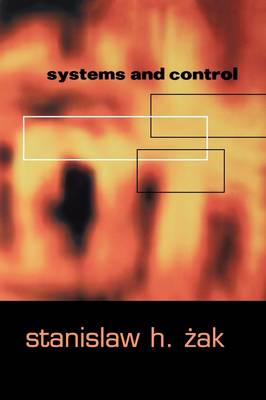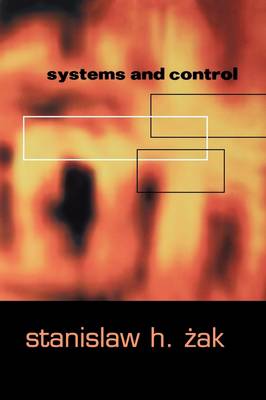
- Afhalen na 1 uur in een winkel met voorraad
- Gratis thuislevering in België vanaf € 30
- Ruim aanbod met 7 miljoen producten
- Afhalen na 1 uur in een winkel met voorraad
- Gratis thuislevering in België vanaf € 30
- Ruim aanbod met 7 miljoen producten
Zoeken
Omschrijving
Systems and Control presents modeling, analysis, and control of dynamical systems. Introducing students to the basics of dynamical system theory and supplying them with the tools necessary for control system design, it emphasizes design and demonstrates how dynamical system theory fits into practical applications. Classical methods and the techniques of postmodern control engineering are presented in a unified fashion, demonstrating how the current tools of a control engineer can supplement more classical tools.
Broad in scope, Systems and Control shows the multidisciplinary role of dynamics and control; presents neural networks, fuzzy systems, and genetic algorithms; and provides a self-contained introduction to chaotic systems. The text employs Lyapunov's stability theory as a unifying medium for different types of dynamical systems, using it--with its variants--to analyze dynamical system models. Specifically, optimal, fuzzy, sliding mode, and chaotic controllers are all constructed with the aid of the Lyapunov method and its extensions. In addition, a class of neural networks is also analyzed using Lyapunov's method.
Ideal for advanced undergraduate and beginning graduate courses in systems and control, this text can also be used for introductory courses in nonlinear systems and modern automatic control. It requires working knowledge of basic differential equations and elements of linear algebra; a review of the necessary mathematical techniques and terminology is provided.
Broad in scope, Systems and Control shows the multidisciplinary role of dynamics and control; presents neural networks, fuzzy systems, and genetic algorithms; and provides a self-contained introduction to chaotic systems. The text employs Lyapunov's stability theory as a unifying medium for different types of dynamical systems, using it--with its variants--to analyze dynamical system models. Specifically, optimal, fuzzy, sliding mode, and chaotic controllers are all constructed with the aid of the Lyapunov method and its extensions. In addition, a class of neural networks is also analyzed using Lyapunov's method.
Ideal for advanced undergraduate and beginning graduate courses in systems and control, this text can also be used for introductory courses in nonlinear systems and modern automatic control. It requires working knowledge of basic differential equations and elements of linear algebra; a review of the necessary mathematical techniques and terminology is provided.
Specificaties
Betrokkenen
- Auteur(s):
- Uitgeverij:
Inhoud
- Aantal bladzijden:
- 720
- Taal:
- Engels
- Reeks:
Eigenschappen
- Productcode (EAN):
- 9780195150117
- Verschijningsdatum:
- 19/12/2002
- Uitvoering:
- Hardcover
- Formaat:
- Genaaid
- Afmetingen:
- 190 mm x 242 mm
- Gewicht:
- 1397 g

Alleen bij Standaard Boekhandel
+ 772 punten op je klantenkaart van Standaard Boekhandel
Beoordelingen
We publiceren alleen reviews die voldoen aan de voorwaarden voor reviews. Bekijk onze voorwaarden voor reviews.








